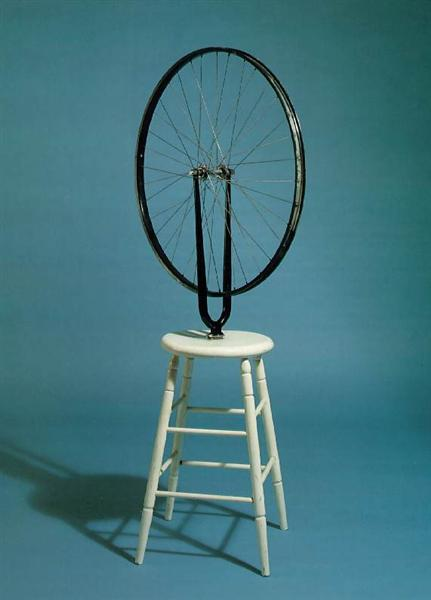Transformational Readymade
In this project, we will be working with the GMU gallery and the sound art class on an event that will take place in late April. The event is in conjunction with an exhibition to be held in the galleries. We will be working in parallel with these artists.
https://mariagaspar.com/forcesandwaves
and
https://www.stephaniemercedes.com/
In our component, we will be working with sound and movement. By combining found and constructed elements, you will create a sculpture that has actual moving parts and generates sound. The sculpture can be powered by any of a number or means, both electrical and non; wind, gravity, tension or human as well as by any means of motor or appliance. (As the project develops, we will discuss the parameters possible with this.)
Movement/sound can imply many things, life, time, progress, tension, meditation and repetition. It can be fast or slow, repetitive or explosive. Each of these kinds of movement can lead the viewer in any number of directions. A flapping piece of paper can bring to mind a bird in flight, a tapping rod can imply restlessness, etc. As the artist, you must develop a mechanism that conveys a specific feeling or mood. Combine the mechanism carefully with other elements and materials, and a new experience will emerge.
Following the motif of the above artists, we will start with found objects that have personal meaning to you. This can be just about anything, though make sure it is not so precious that you can’t integrate it into a sculpture.
Here is a good selection of sound based sculptures.

“In 1913,” recalled Marcel Duchamp, “I had the happy idea to fasten a bicycle wheel to a kitchen stool and watch it turn.”1 The result, Bicycle Wheel, is the first of Duchamp’s Readymades—objects (sometimes manufactured or mass-produced) selected by the artist and designated as art. Most of Duchamp’s Readymades were individual objects that he repositioned or signed and called art, but Bicycle Wheel is what he called an “assisted Readymade,” made by combining more than one utilitarian item to form a work of art.
-From MoMa Website (https://www.moma.org/learn/moma_learning/marcel-duchamp-bicycle-wheel-new-york-1951-third-version-after-lost-original-of-1913/)